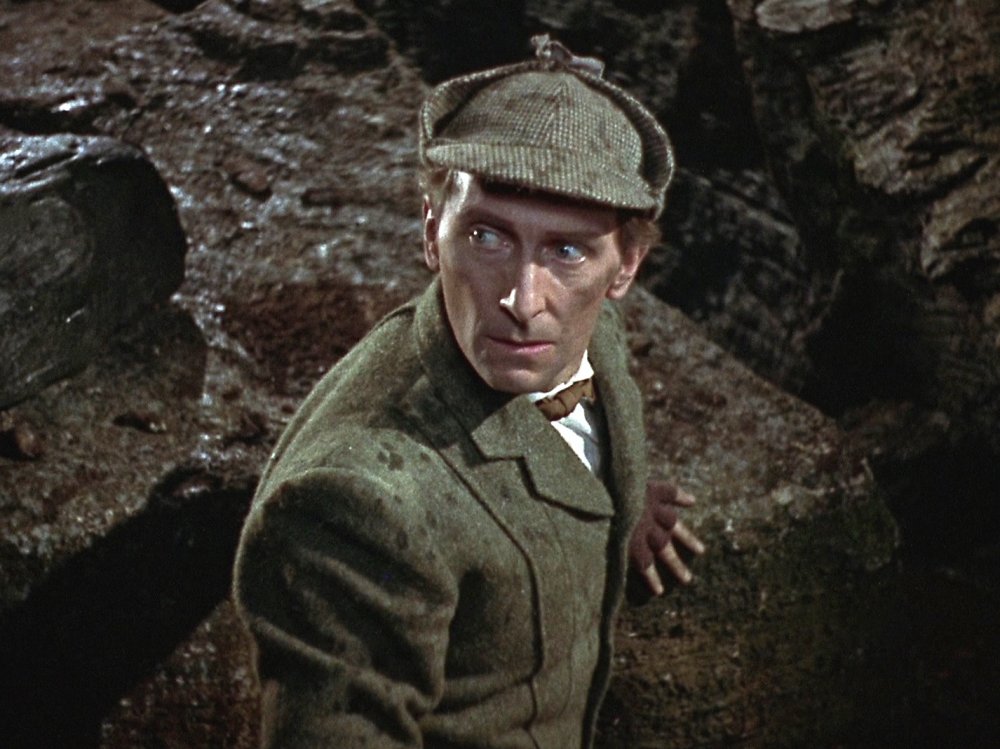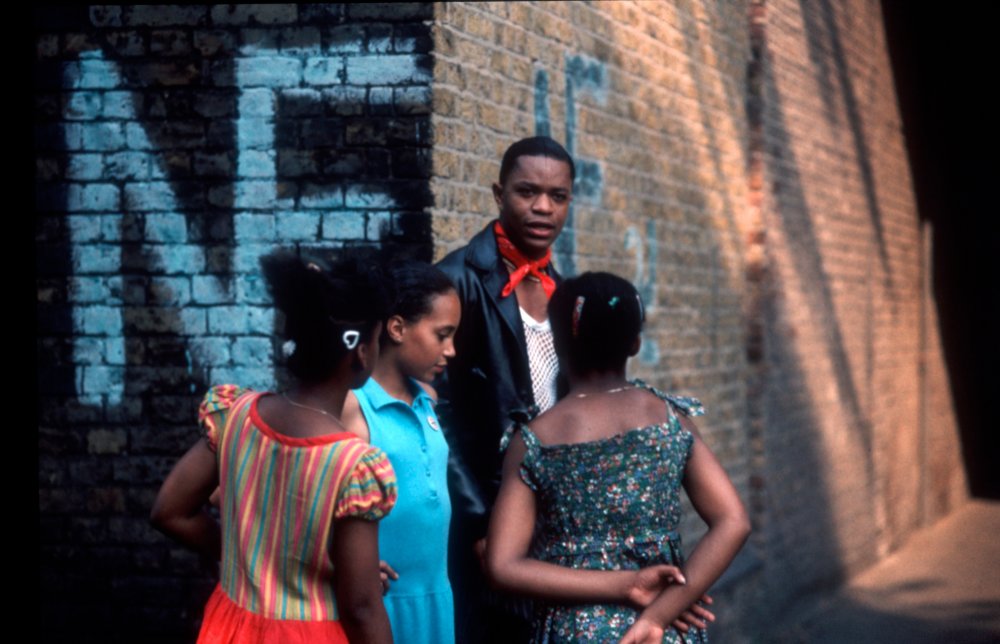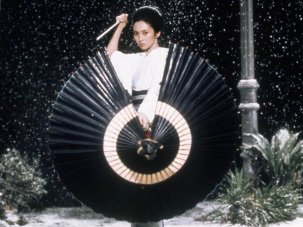The BFI has launched the BFI Filmography, the world’s first complete and accurate living record of UK cinema, which means everyone – from film fans and industry professionals to researchers and students – can now search and explore British film history, for free. A treasure trove of new information, the BFI Filmography is an ever-expanding record that draws on credits from over 10,000 films, from the first UK film released in cinemas in 1911 through to present day, and charts the 250,000 cast and crew behind them.
There are 130 genres within the BFI Filmography, the largest of which is drama with 3,710 films. Additionally, the numbers reveal that when it comes to film, laughter is nearly four times more popular with filmmakers than love, with 2,347 comedy films versus 625 romance films. More films are made about war than any other subject (582 films) and only 146 have sex as a theme. The most featured characters are James Bond and Queen Victoria, who both appear in 25 films each, followed by Sherlock Holmes (24 films). UK filmmakers are also more interested in Europe than Great Britain, with 527 films having Europe as a subject, compared with 431 on Great Britain.
The most featured characters in film
1. James Bond (25 films)
= Queen Victoria (25 films)
3. Sherlock Holmes (24 films)
4. Miss Moneypenny (17 films)
5. M (16 films)
6. Q (15 films)
7. Prince of Wales (13 films)
= Old Mother Riley (13 films)
9. Queen Elizabeth (12 films)
10. Felix Leiter (10 films)
11. Henry VIII (8 films)
= Harry Potter (8 films)
A look at the most credited actors reveals Judi Dench as the most prolific female actor working today, appearing in 41 films, followed by Maggie Smith with 40 films. The ever-changing taste of the public is highlighted by the actors that have appeared in the greatest number of films each decade. Horror film star Peter Cushing takes the top spot in the 70s, comedy star Robbie Coltrane has the most prolific actor position of the 80s, ultimate ‘lad-actor’ Keith Allen and actor Sadie Frost are the most prolific male and female actors of the 90s, and classic drama actors Michael Gambon and Jim Broadbent, both starring in the Harry Potter franchise among other notable films, are revealed as having appeared in the most films of the 2000s and 2010s. The most prolific female actor of the current decade is Kate Dickie (Red Road), closely followed by Doctor Who’s Jodie Whittaker and Prevenge writer, director and star Alice Lowe.

Peter Cushing, the most prolific British male actor of the 1970s, playing Sherlock Holmes, the third most featured character, in The Hound of the Baskervilles (1959)
James Bond director Lewis Gilbert, also known for Alfie, Educating Rita and Shirley Valentine, is the most prolific living director (33 films). He is followed by Ken Loach (27 films), whose first film was Poor Cow in 1968, closely followed by the acclaimed Kes and most recently, the 2016 Cannes Palme d’Or winner, I, Daniel Blake. 2017 saw Gurinder Chadha (Bend It like Beckham) – the second most prolific female director ever – write, direct and produce Viceroy’s House.
The BFI Filmography launches with new and revelatory findings about the gender imbalance in UK films, both in on-screen and off-screen roles. Carried out in partnership with innovation foundation Nesta, the findings show that women are still not accurately represented, and are more often cast in gender stereotypical unnamed roles (such as prostitutes, housekeepers and nurses). They also tend to have shorter careers and on average make fewer films than male actors. Behind the camera there have been some improvements in the gender balance, with the percentage of crew members who are women rising from 3% in 1913 to 34% in 2017. Conversely, in several departments, such as photography and music, women still comprise less than 10% of senior crew members.
Most prolific actors of each decade 1960-2017
1960s Marianne Stone (62 films) / John le Mesurier (51 films)
1970s Marianne Stone (37 films) / Peter Cushing (29 films)
1980s Liz Smith (14 films) / Robbie Coltrane (16 films)
1990s Sadie Frost (10 films) / Keith Allen (14 films)
2000s Shirley Henderson (18 films) / Michael Gambon (21 films)
2010s Kate Dickie (13 films), Jodie Whittaker (12 films) / Jim Broadbent (21 films), Michael Fassbender (17 films)
Overall, under 1% of crews are majority female and only 7% since 2000. Documentary is the category most made by women post 1990 (31%), but is one of the genres that features women the least (26%).
While the BFI Filmography launches with a detailed look at gender, it is the intention to continue to build on the data, to provide a greater understanding of representation on and off screen. Work towards this began in 2016, with the BFI Black Star research study finding that 59% of films released in the last 10 years did not include a single black actor.
Heather Stewart, BFI Creative Director, said: “With the creation of the BFI Filmography, with a complete data set from 1911 to the present day, we now know for the first time ever, exactly how many films have been made and released, when and by whom. At a time when the UK film industry is burgeoning, the BFI Filmography is an invaluable resource for anyone with an interest in film, providing evidence that can help inform policy, the future of the industry and its workforce.”
Behind the camera
The BFI Filmography enables us to see the careers of the UK film workforce, spanning roles across all departments and charting individuals’ paths across the decades.
A look at the data shows the films of Ken Loach collectively credit the most cast; 1,099 actors across all his films. Additionally, Ridley Scott (Blade Runner, Alien) credits the most crew members across all his UK feature films, with 2,332 people.
Most prolific women directors
Muriel Box (13 films)
Christine Edzard (7 films)
Gurinder Chadha (7 films)
Sally Potter (7 films)
Wendy Toye (6 films)
Mira Nair (6 films)
Penny Woolcock (5 films)
Beeban Kidron (5 films)
Debbie Isitt (5 films)
Mary McGuckian (5 films)
The BFI Filmography highlights the gender disparity of the film workforce, revealing that less than 1% of all films have had a majority female crew (23 out of more than 10,000). A closer analysis of specific roles shows only 4.5% of all UK films are directed by women, the most prolific female director being Muriel Box (Rattle of a Simple Man, The Piper’s Tune) with 13 films compared to the most credited male director Maurice Elvey (The Suicide Club, Love in a Wood) with 151 films.
Looking back across the BFI Filmography, Dinah Shurey was the first woman to write, direct and produce, with Carry On! (1927). Senior crew roles remain dominated by men; in 2016 for instance, there were still only 10 films written, directed and produced by three different women. Out of all lead creative crew roles, female directors of photography are particularly underrepresented – only 1.3% of UK films have a female director of photography – the most prolific is Nina Kellgren (Young Soul Rebels), with eight DoP credits.

Young Soul Rebels (1991), shot by Nina Kellgren, the UK’s most prolific female director of photography
The most credited person within the BFI Filmography is Scottish composer and conductor Muir Matheson, who worked on 379 films. Only four women have contributed to more than 100 films including orchestra contractor Isobel Griffiths, who worked on 194 films and script supervisor Renée Glynne, whose 111 crew credits include the classics Brief Encounter, A Room with a View and Yellow Submarine. Renée also has three cast credits, taking her total to 114; one of these is due to when she appeared on screen as herself, in Jean-Luc Godard’s Rolling Stones film, Sympathy for the Devil.
On screen and casting
The most prolific actors across the BFI Filmography by decade, reveal the careers of well – known UK screen stars from old to new. Jodie Whittaker, the first female Doctor Who and star of Attack the Block and St Trinian’s, is one of the most prolific female actors of the current decade (12 films), alongside Kate Dickie whose 13 films include Red Road, Prometheus and The Witch and Alice Lowe (12 films) who wrote, directed and starred in Prevenge. Less familiar names feature as the most prolific actors of all time – actor Wally Patch made 195 films over a 40-year career and female actor Marianne Stone made 162 films. Diving into the data further Michael Caine (70 films) is the most prolific actor working today.

Red Road (2006): Kate Dickie (right) is revealed as the most prolific female actor of the 2010s
The BFI Filmography shows that there has been little change in the role of women on screen. The percentage of women cast is the same today as in the early years of cinema. In 1913, 31% of all the cast in 51 films were female actors; of the films made in 2017 so far, the percentage of women cast is just 30% (71 films). Looking at films since 1990, there is a swing in the gender balance in casting on films with an all-female director and writer team, increasing the women on screen by nearly half, from 32% to 45%.
Characters women are MOST likely to play (when name/gender is unspecified)
Prostitute – 94% cast as women
Housekeeper – 91% cast as women
Nurse – 88% cast as women
Receptionist – 80% cast as women
Characters women are LEAST likely to play (when name/gender is unspecified)
Police inspector – 0% cast as women
Police sergeant – 0% cast as women
Steward – 0% cast as women
Taxi driver – 0% cast as women
Further insights materialise in analysing unnamed characters and the gender of actors who play them. Stereotypes are dramatically evident, with 94% of all unnamed prostitutes played by female actors and the casting of male actors as drunks registering at 100% before 1985. Casting in more recent years shows some developments, with female actors cast in 10% of drunk character roles since 1985 and an increase in the casting of women as unnamed doctors from 3% to 15% for films made since 1985. However, starkly, this representation does not match reality in the UK today, where women make up 52% of NHS GPs (source: UK’s General Practitioner Register, July 2017). Additionally, these increases are not consistent across the professions, with a startling 0% of women cast as unnamed police inspectors or police sergeants, despite the current highest-ranking police officer in the UK being a woman, London Metropolitan Police Commissioner Cressida Dick.
The complete picture over time
The BFI Filmography data shows the highs and lows of UK cinema, revealing the 1930s to be the most active decade, with 1,544 films released. The decade with the fewest films released is the 1980s, seeing an all-time low of just 468 feature films. 2015 saw the return of the golden age of cinema in the UK, with 232 films released, the highest annual output since the 1930s.
Top 10 most popular genres
1. Drama
2. Comedy
3. Crime
4. Thriller
5. Romance
6. War
7. Horror
8. Musical
9. Action & Adventure
10. Documentary
The development of the BFI Filmography was a major commitment in BFI 2022 and with its launch, the UK is the first major filmmaking territory to make available the complete data of its feature film output. This resource complements the BFI National Archive (established in 1935), which holds one of the largest film collections in the world, and the ongoing work by the BFI to produce detailed credit information on every feature film ever released in the UK (begun in 1934). This unique resource furthers the opportunity for film enthusiasts to discover and view thousands of films from the archive, which are available online on BFI Player and through the recently revamped BFI Mediatheque at BFI Southbank and mediatheques UK-wide.
The BFI Filmography provides an exciting opportunity to develop research projects in partnership with relevant experts. A gender focused analysis of the BFI Filmography is an example of this collaboration, having been carried out in partnership with leading innovation foundation, Nesta. Today Nesta, who support innovation in the creative economy, arts and culture, published two articles containing a series of interactive data visualisations exploring the gender imbalance in UK film casts and crews.
The BFI Filmography is constantly evolving, with new information being added as UK feature films are released in cinemas. It is available to the public via the BFI website from today. Infographics present the data in useful visual diagrams, with optional filters and search parameters revealing facts and discoveries that can be easily shared on Facebook and Twitter. It has been designed for the BFI by independent digital design studio MagneticNorth.
-
BFI Filmography data visualisation tool
Search and explore British film history for free.





